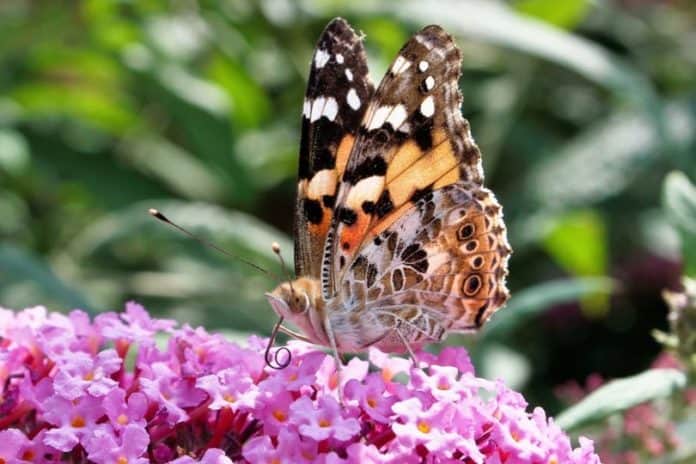By Gig Conaughton, County of San Diego Communications Office
You may have noticed—San Diego County is blossoming with beautiful, floating, black and orange “painted lady” butterflies.
“You just peek out the window and there they are, they’re everywhere,” said Chris Conlan, who is not only a supervising vector ecologist with the County of San Diego, but also a “butterfly guy” ever since his mom gave him a handmade butterfly net when he was 4 years old.
Conlan said what we’re seeing is really just an increase in the normal painted lady butterfly migration we typically see every year here. He said it’s just blooming this year because we’ve had so much rain, and that he expects it to last for a while.
This is normal whenever we get good rain,” he said. “The butterflies will build up their populations down south (in Mexico) where it’s a little warmer and then begin migrating north, laying eggs all along the way on the various weeds and flowers they use for food.”
Even though the painted ladies are seemingly everywhere right now, Conlan said the best place to look for them would be where there is lots of food—plants— for caterpillars and butterflies.
“Really, right now if you want to see them you’re going to want to find places where there are lots of blooming wildflowers,” he said.
Of course, the same conditions that create more butterflies are likely to mean increased numbers of other insects.
“More rain equals more bugs,” Conlan said, “That’s just kind of par for the course, (and) it’s a sign that we’re going to see more bugs this spring. The butterflies are just one of the first to come through and make their presence known.”
So that means county residents should soon start noticing more crane flies—also known as “mosquito hawks,” the big, ungainly flyers that look like large mosquitoes, but aren’t, that you often see careening around your yard and bouncing off your porch lights. They’ll also see more spiders, gnats, ticks, beetles and other crawlers.
What about mosquitoes?
As the County’s supervising vector ecologist, Conlan spends a lot of time teaching the public how to protect themselves from mosquitoes and the kinds of diseases they can spread, including West Nile virus, chikungunya, dengue and Zika.
San Diego County’s Vector Control Program monitors the population of vectors — animals like ticks, fleas, rodents and mosquitoes — that can transmit diseases to people.
Conlan said it’s possible that the rains that have brought the butterflies could possibly mean we’ll have more mosquitoes in the spring. But, he said, when it comes to mosquitoes, you have to wait and see if more rain equals more bugs. That’s because increased rainfall can create more—or fewer—places for mosquitoes to lay eggs and breed.
“Places where water may have been stagnant could be flowing,” Conlan said. “And mosquitoes don’t breed in flowing water. Then again, places that otherwise would be not be holding water in dry years could be holding water. So you have have to shift your strategy and adapt to where the mosquitoes are growing.”
For now, Conlan said if you like butterlies, this is your time.
“Enjoy it while you can,” he said. “Things are going to get a bit more buggy as we get into the spring.”




